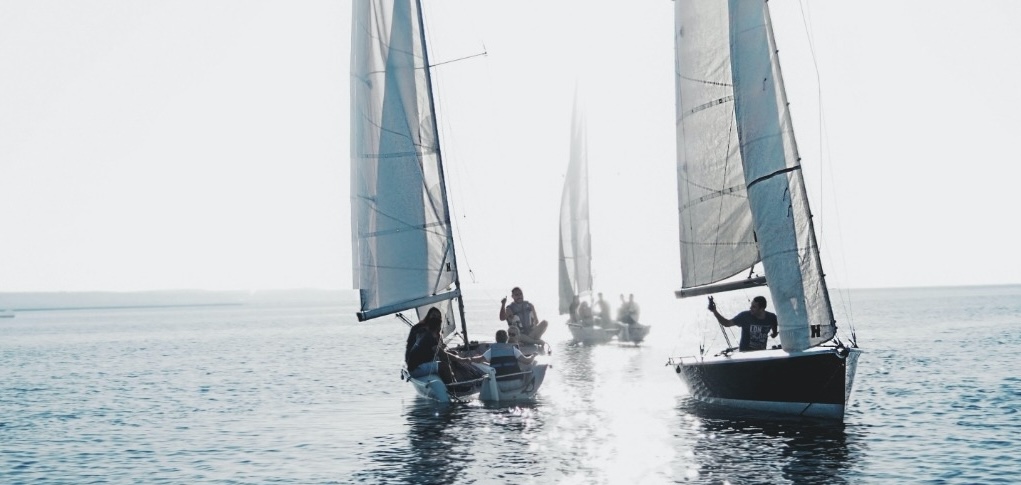SailZoo Blog
Boat Bottom Painting: Timing, New Rules, Environmental Impact and General Tips
With new legislation and increasing environmental awareness, the future of antifouling is taking a significant turn towards pesticide and biocide-free. In this post, we will explore how Alpina Marine and Jakob Jensen Boatyard are navigating these changes and why pesticide-free bottom paints are not just a trend but a necessity for both our boats and our marine environment. We also take a look at when it's best to bottom paint your boat - an eternal topic of debate in any harbor that we'd like to kill :) - as well as how to navigate the new biocide-free bottom paint regulations. Plus, we share general advice from experts including an important focus on wastewater challenges when switching to new paint types.

When should you bottom paint the boat?
The short answer: IT CAN BE DONE BOTH SPRING AND FALL! There is no ultimate answer to when you MUST bottom paint your boat.
Most people do this when preparing for spring, but professionals like Daniel from Alpina Marine recommend that you consider fall as the ideal time for bottom painting.
However, it also depends on the type of bottom paint. If it's a self-polishing bottom paint, about 80% of self-polishing bottom paint products (e.g. Hempel's Mille NCT, Jotun Non-Stop or similar) are completely "indifferent" to whether it's fall or spring - as long as the boat is launched within 12 months. However, some of the biocide-free types, such as Hempel Silic One, should be applied at least one month before launching.
Daniel recommends doing it in the fall if it's self-polishing or hard racing - simply for practical reasons:
- It's easier to choose days when the humidity is not too high and the temperature is optimal for drying time. Unfortunately, when we are in the northern latitudes here in Denmark, the deadline is usually October, before the temperature is too low and the humidity too high.
- It's also less stressful as there's no deadline for launching or other urgent things that need to be done, as there usually is before the boat is launched in the spring.
New rules for biocide-free bottom paints
"Instead of being so busy worrying about who can make the best paint, maybe we should focus a little more on how we efficiently and environmentally friendly handle the wastewater that arises from all this toxic old bottom paint that is sprayed off year after year?" - Morten, Jakob Jensen Boatyard.
With new regulations coming into effect, it's important for boat owners to consider the transition to biocide-free bottom paints. This shift is driven by a growing awareness of the state of the environment and legislative changes aimed at phasing out bottom paints that contain harmful chemicals. Daniel explains that the future is biocide-free and recommends boaters familiarize themselves with these products as they represent the new standard.
"Biocidal bottom paints are a dying breed, and within the next 5 years there will probably be legislation in the EU banning the sale of biocidal bottom paints and eventually a ban on even having them on your boat. The bottom paint of the future is biocide-free." - Daniel, Alpina Marine
The problem with the new biocide-free products is that you often have to peel off the existing bottom paint before you can apply the new one. And that costs time and money - but it's especially costly on the environmental front.
Wastewater challenges when switching to biocide-free bottom paints
Morten Halkier from Jakob Jensen's Boatyard highlights an often overlooked part of switching to biocide- or pesticide-free bottom paints: the full cycle and its impact on the environment.
While there is a clear movement towards environmentally friendly bottom paint products that can comply with the new regulations, there is a concern about how we handle the transition, especially in terms of wastewater from the removal of the old, toxic bottom paint.
Morten points out that legislation and the transition to new paint types are not necessarily fully thought through in terms of environmental protection. At Jakob Jensen's boatyard, this has been taken into account with the establishment of a drainage system that directs wastewater through a sand filter and back to nature in a clean and responsible way. Unfortunately, such systems are not yet widespread in many shipyards and ports, which poses a great challenge both environmentally and economically.
General advice on bottom paint from experts
In general, it's important to realize that with undercoating, price and quality are unfortunately very closely linked. The better the bottom paint, the more expensive it is. The reason for this is, among other things, that the really good bottom paints contain some substances that are relatively expensive to produce. So it's not just branding you pay for in these cases.
Also, be careful to compare how your boat's bottom looks from year to year. Several factors affect the growth of organisms on the bottom - such as the number of miles you sail, the amount of sunlight, the salt content of the water, and whether the water has been stagnant or had good flow. The best advice is not to compromise on quality (price) as it will cost you more in the long run.
Conclusion: the future is green
For private boat owners, the switch to pesticide and biocide-free bottom paints marks a new era in boat maintenance. By choosing the right time for bottom painting, embracing the new eco-friendly products and following the advice of experts, you can protect not only your boat but also the waterways we all cherish. Remember, your efforts make a difference for both your boat and our planet.
You can read The bottom paint ordinance here.
You can read The bottom paint ordinance here.
Written by Mads SailZoo day 8. February 2024

Sign up for newsletter
Stay tuned for new sailing articles, sailing industry news and early access to new features.
Also see








.png/)


.png/)




.png/)



